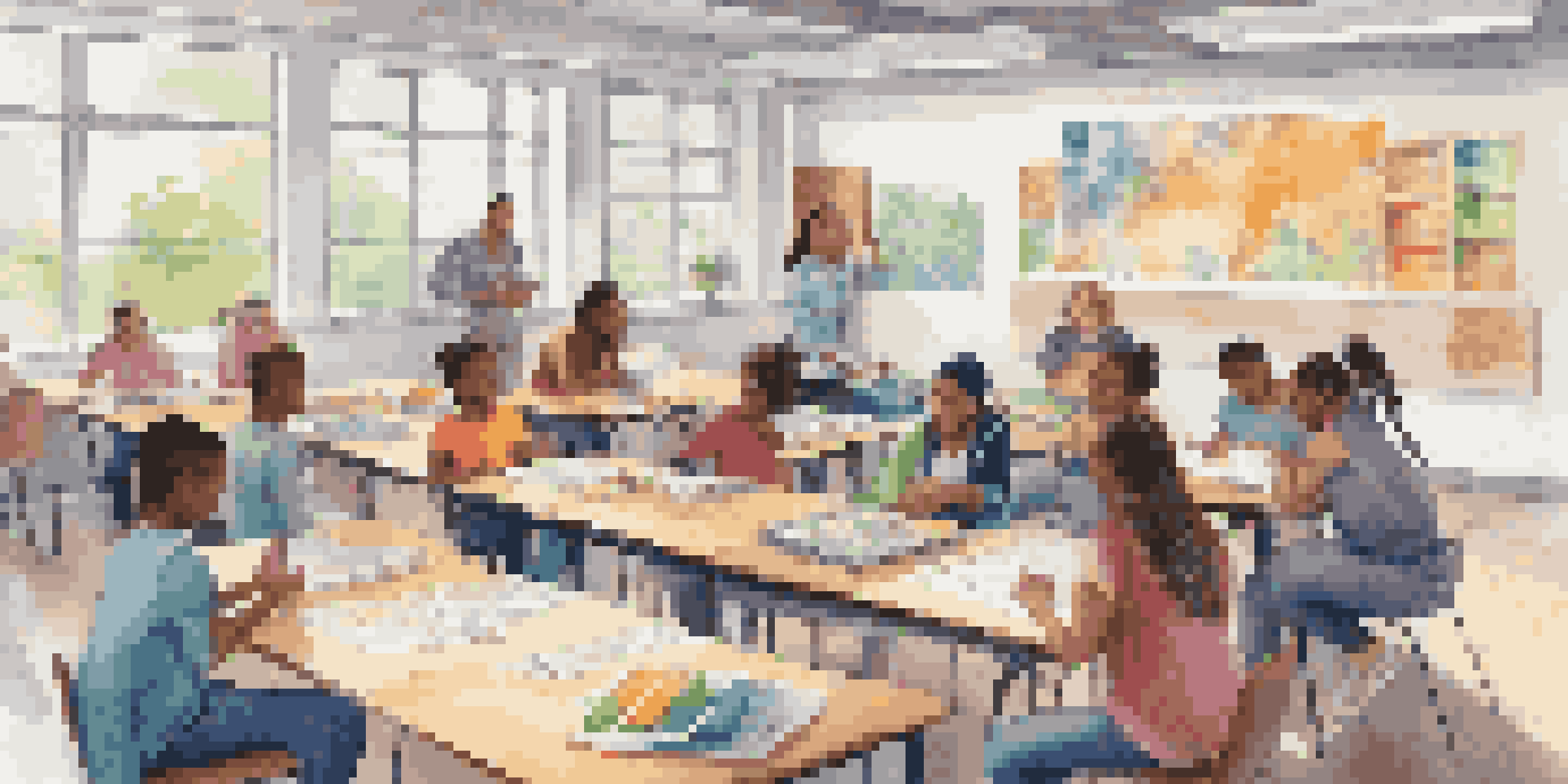Navigating the Challenges of Student-Centered Learning Today

Understanding the Core of Student-Centered Learning
Student-centered learning puts the learner at the heart of the educational experience. Rather than the traditional approach where the teacher is the primary source of knowledge, this method encourages students to take charge of their own learning. It fosters critical thinking, creativity, and collaboration, key skills for the modern world.
Education is not the filling of a pail, but the lighting of a fire.
However, implementing this approach can be challenging. Teachers must shift their roles from information providers to facilitators, which can be a significant adjustment. This transition involves not only changing teaching strategies but also rethinking assessment and classroom management.
Moreover, student-centered learning requires a supportive environment where learners feel safe to express their thoughts and ideas. This means schools need to invest in professional development for teachers and create a culture that values student voice and choice.
Identifying Barriers to Student-Centered Learning
While the benefits of student-centered learning are clear, several barriers can hinder its implementation. One major challenge is the rigid structure of traditional curricula, which often prioritizes standardized testing over personalized learning experiences. This can limit teachers' flexibility to adapt their methods to meet students' diverse needs.

Another barrier is the lack of resources and support for teachers. Many educators feel overwhelmed by the demands of developing individualized learning plans, especially in larger classrooms. Without access to training, tools, and smaller class sizes, fully embracing a student-centered approach can feel daunting.
Student-Centered Learning Defined
This approach places students at the forefront of their education, encouraging independence and critical thinking.
Additionally, some students may be resistant to this model due to a lack of familiarity with self-directed learning. Students accustomed to passive learning may struggle to engage actively in their education, necessitating targeted strategies to encourage their participation.
Embracing Technology in Student-Centered Learning
Technology can be a powerful ally in promoting student-centered learning. Digital tools and resources enable personalized learning experiences, allowing students to learn at their own pace and according to their interests. For example, online platforms can offer a variety of resources tailored to different learning styles.
The greatest sign of success for a teacher is to be able to say, 'The children are now working as if I did not exist.'
Moreover, technology facilitates collaboration among students, even when they are physically apart. Tools like discussion forums, video conferencing, and project management apps help students work together on projects and share ideas, enriching their learning experience.
However, it’s crucial for educators to ensure that technology enhances learning rather than hinders it. Providing guidance on how to use these tools effectively and promoting digital literacy is essential to ensure that all students can benefit from technological advancements.
Fostering a Growth Mindset in Students
A growth mindset, the belief that abilities can be developed through dedication and hard work, is vital for student-centered learning. Encouraging students to embrace challenges and learn from their mistakes fosters resilience, which is crucial for their academic journey. For instance, praising effort over innate talent can motivate students to push through difficulties.
Teachers can cultivate this mindset by modeling it themselves. Sharing personal experiences of overcoming obstacles can inspire students to adopt a similar attitude. Creating opportunities for reflection, where students can evaluate their learning processes, also reinforces this mindset.
Challenges in Implementation
Barriers such as rigid curricula and resource limitations can hinder the effective adoption of student-centered methods.
Additionally, integrating activities that promote resilience, such as group problem-solving tasks, can help students see the value in perseverance. By nurturing a growth mindset, educators empower students to take ownership of their learning and embrace the journey.
Creating a Collaborative Classroom Environment
Collaboration is at the heart of student-centered learning. By fostering a collaborative classroom environment, teachers can encourage students to learn from one another, share ideas, and work together on projects. This not only enhances social skills but also deepens understanding through peer-to-peer interaction.
To promote collaboration, teachers can implement group activities and encourage students to take on different roles within their teams. For example, assigning specific responsibilities within a project can help students appreciate diverse perspectives and develop teamwork skills.
It's also important for teachers to establish ground rules for collaboration to ensure a respectful and productive environment. Setting clear expectations and providing guidance on effective communication can help students engage meaningfully in group tasks.
Assessing Student-Centered Learning Effectively
Assessment in a student-centered learning environment can be quite different from traditional methods. Instead of relying solely on tests and quizzes, educators should consider a variety of assessment types that reflect students' learning processes and growth. Portfolios, presentations, and peer evaluations are great ways to capture a student's journey.
Moreover, formative assessments, which provide ongoing feedback during the learning process, can be particularly beneficial. These assessments help teachers gauge understanding and adjust instruction as needed, ensuring that all students are progressing.
The Role of Technology
Technology enhances personalized learning experiences and facilitates collaboration among students, but must be used thoughtfully.
It's also essential to involve students in the assessment process. Allowing them to set their own goals and reflect on their learning can foster a sense of ownership and accountability. This approach not only enhances engagement but also helps students develop critical self-assessment skills.
Building Strong Relationships with Students
Strong relationships between teachers and students are crucial for effective student-centered learning. When students feel valued and understood, they are more likely to engage actively in their education. Simple gestures, like taking time to check in with students or showing interest in their lives, can significantly impact their motivation.
Additionally, building trust is essential. Creating an atmosphere where students feel comfortable sharing their thoughts and feelings encourages open communication. This can lead to a deeper understanding of each student’s unique needs and learning styles.

Furthermore, involving students in decision-making can strengthen these relationships. By giving students a voice in classroom activities and discussions, teachers can foster a sense of community and belonging, making students feel that their opinions truly matter.